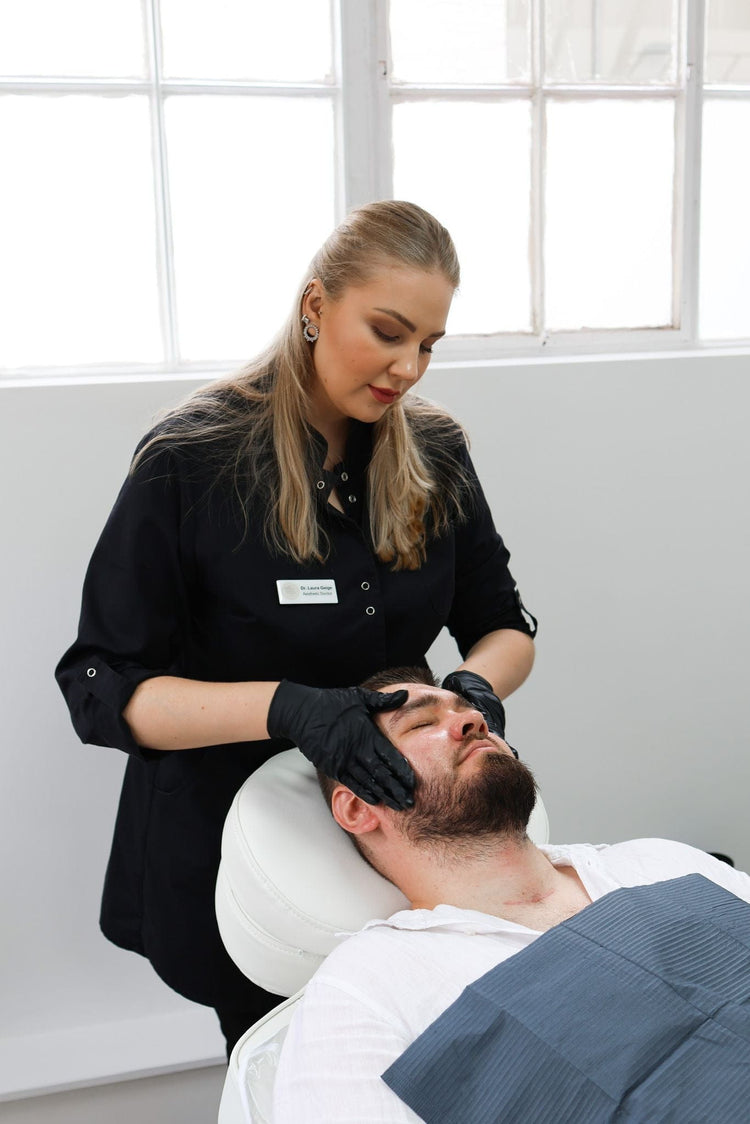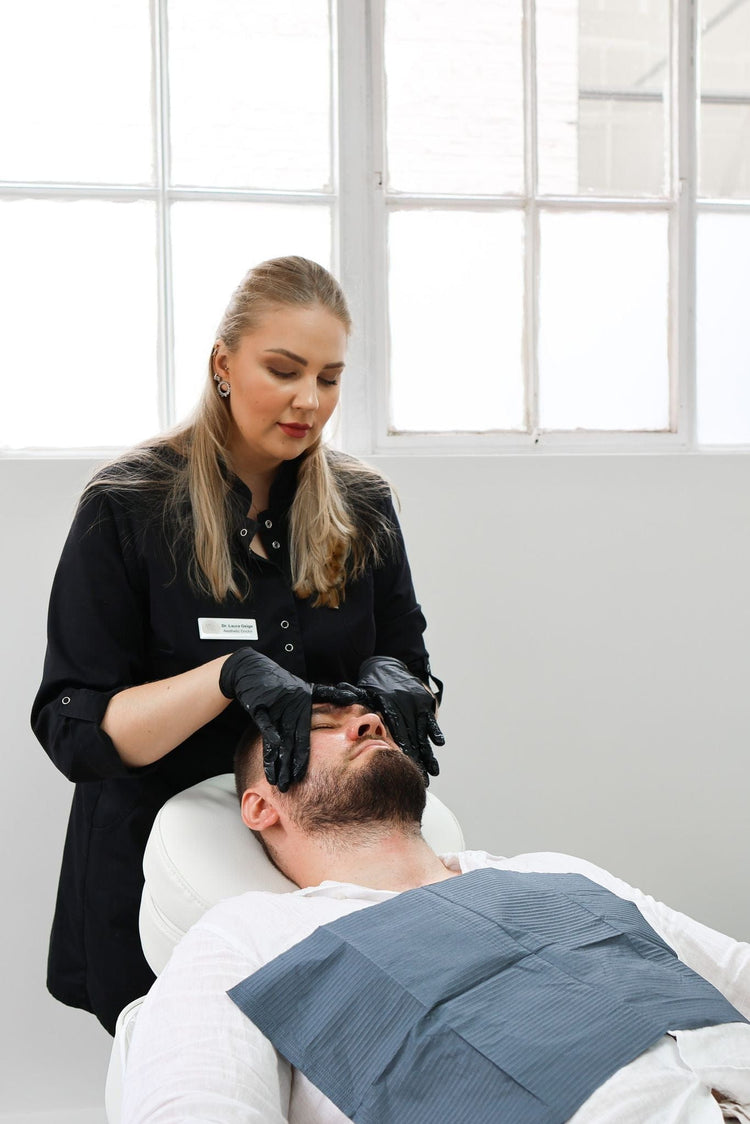Historical Context
To truly understand the significance of misshapen noses within the context of Send, Surrey, it’s essential to delve into the historical landscape of this quaint village. Examining the social norms, medical practices, and cultural beliefs prevalent during different eras can shed light on how perceptions of physical attributes, including nose deformities, evolved over time.
Origins of the Legend
Send, a village steeped in history, likely witnessed changes in societal views on physical appearance mirroring broader trends. During medieval times, physical imperfections were often attributed to supernatural forces or divine punishment, leading to social stigma and isolation for those deemed “different.”
Earliest Mentions in Literature
The Renaissance era brought about a shift in thinking, with the rise of humanism emphasizing individual worth and celebrating human diversity. However, societal perceptions of beauty still played a significant role, and deformities might have been considered aesthetically displeasing.
Earliest mentions of misshapen noses within Send’s literature are likely to be sparse, as detailed personal accounts from ordinary villagers were rarely recorded. Parish records, if they exist, might mention individuals with physical peculiarities, but these entries would primarily focus on legal or social matters rather than aesthetic judgments.
Folklore and Local Traditions
Folklore and local traditions can provide intriguing insights into the cultural significance of misshapen noses in Send. While concrete evidence may be scarce, exploring oral histories, folktales, and local customs could reveal underlying beliefs and attitudes towards physical appearance.
For instance, if specific legends or tales feature characters with misshapen noses, they might offer clues about how these individuals were perceived within the community – as wise, mischievous, unlucky, or even objects of ridicule.
Similarly, local customs or beliefs surrounding birthmarks or physical deformities could shed light on the broader social context. Did certain practices exist to mitigate the perceived bad luck associated with a misshapen nose? Or were there rituals or ceremonies meant to celebrate the uniqueness of individuals?
It’s important to approach such folklore and traditions with sensitivity, recognizing their potential biases and evolving nature over time.
Physical Description
Understanding how physical attributes, particularly deformities like a misshapen nose, were perceived in Send, Surrey, requires a journey through the village’s history.
Location and Size
To truly understand the significance of misshapen noses within the context of Send, Surrey, it’s essential to delve into its historical landscape. Examining the social norms, medical practices, and cultural beliefs prevalent during different eras can shed light on how perceptions of physical attributes, including nose deformities, evolved over time.
Send is a village steeped in history, likely witnessing changes in societal views on physical appearance mirroring broader trends. During medieval times, physical imperfections were often attributed to supernatural forces or divine punishment, leading to social stigma and isolation for those deemed “different.” The Renaissance era brought about a shift in thinking, with the rise of humanism emphasizing individual worth and celebrating human diversity. However, societal perceptions of beauty still played a significant role, and deformities might have been considered aesthetically displeasing.
The size of Send would have influenced its social dynamics and attitudes towards physical appearances. A larger village might have had greater diversity in opinions and acceptance compared to a smaller, more tightly-knit community.
Further exploration into the geographical location of Send, its proximity to other towns or religious centers, and any historical events that may have impacted local perspectives could provide additional context regarding the perception of misshapen noses.
Geological Formation
The physical description of a misshapen nose can vary greatly. It might be crooked, bulbous, flat, or uneven in size. These variations can arise from genetic factors, injuries, infections, or birth defects. Understanding the geological formation of Send, Surrey, can offer insights into potential environmental factors that might have influenced the prevalence of certain physical traits within the population.
The underlying geology of an area can sometimes influence the types of minerals and substances present in water sources or soil. While there’s no direct link between geological formations and specific facial features, historical studies have shown correlations between trace elements in the environment and birth defects in some cases.
Investigating the geological history of Send could reveal any unique mineral compositions or environmental factors that might have played a role, although it’s crucial to remember that such connections are complex and often require extensive research.
Notable Features
The physical description of a misshapen nose can vary greatly.
- It might be crooked
- bulbous
- flat
- or uneven in size.

These variations can arise from genetic factors, injuries, infections, or birth defects.

Mythology and Folklore
Mythology and folklore offer a fascinating window into the beliefs, values, and cultural anxieties of societies throughout history. These traditional stories, passed down through generations, often reflect societal norms and attitudes towards physical attributes, social hierarchies, and the natural world.
Local Legends and Stories
When exploring mythology and folklore concerning misshapen noses in Send, Surrey, it’s important to approach these narratives with a critical eye. Legends and tales may contain elements of truth intertwined with symbolism, exaggeration, or societal biases.
Consider the context in which these stories originated. Were they meant to explain physical differences, warn against certain behaviors, or entertain? Examining the social structure of Send during different eras can provide valuable insights into how these narratives might have been interpreted and received by various groups within the community.
Folklore often personifies abstract concepts or societal anxieties, and a misshapen nose could have served as a symbol for vulnerability, otherness, or misfortune. Analyzing recurring motifs or character archetypes in local tales might reveal underlying cultural beliefs about physical appearances and their perceived impact on an individual’s fate.
The oral tradition plays a crucial role in preserving folklore. Tracing the transmission of these stories through generations, identifying key storytellers, and understanding how narratives might have been adapted or altered over time can shed light on the evolving perceptions surrounding misshapen noses in Send.
Remember that folklore is often fluid and subject to interpretation. Engaging with local historians, folklorists, or residents who may have knowledge of traditional stories can provide valuable firsthand perspectives and enrich your understanding of how misshapen noses were viewed within the context of Send’s history and culture.
Symbolism and Interpretation
To truly understand the significance of misshapen noses within the context of Send, Surrey, it’s essential to delve into its historical landscape. Examining the social norms, medical practices, and cultural beliefs prevalent during different eras can shed light on how perceptions of physical attributes, including nose deformities, evolved over time.
Send is a village steeped in history, likely witnessing changes in societal views on physical appearance mirroring broader trends. During medieval times, physical imperfections were often attributed to supernatural forces or divine punishment, leading to social stigma and isolation for those deemed “different.” The Renaissance era brought about a shift in thinking, with the rise of humanism emphasizing individual worth and celebrating human diversity. However, societal perceptions of beauty still played a significant role, and deformities might have been considered aesthetically displeasing.
The size of Send would have influenced its social dynamics and attitudes towards physical appearances. A larger village might have had greater diversity in opinions and acceptance compared to a smaller, more tightly-knit community.
Further exploration into the geographical location of Send, its proximity to other towns or religious centers, and any historical events that may have impacted local perspectives could provide additional context regarding the perception of misshapen noses.
The physical description of a misshapen nose can vary greatly. It might be crooked, bulbous, flat, or uneven in size. These variations can arise from genetic factors, injuries, infections, or birth defects.
Mythology and folklore offer a fascinating window into the beliefs, values, and cultural anxieties of societies throughout history. These traditional stories, passed down through generations, often reflect societal norms and attitudes towards physical attributes, social hierarchies, and the natural world.
When exploring mythology and folklore concerning misshapen noses in Send, Surrey, it’s important to approach these narratives with a critical eye. Legends and tales may contain elements of truth intertwined with symbolism, exaggeration, or societal biases.
Consider the context in which these stories originated. Were they meant to explain physical differences, warn against certain behaviors, or entertain? Examining the social structure of Send during different eras can provide valuable insights into how these narratives might have been interpreted and received by various groups within the community.
Folklore often personifies abstract concepts or societal anxieties, and a misshapen nose could have served as a symbol for vulnerability, otherness, or misfortune. Analyzing recurring motifs or character archetypes in local tales might reveal underlying cultural beliefs about physical appearances and their perceived impact on an individual’s fate.
The oral tradition plays a crucial role in preserving folklore. Tracing the transmission of these stories through generations, identifying key storytellers, and understanding how narratives might have been adapted or altered over time can shed light on the evolving perceptions surrounding misshapen noses in Send.
Remember that folklore is often fluid and subject to interpretation. Engaging with local historians, folklorists, or residents who may have knowledge of traditional stories can provide valuable firsthand perspectives and enrich your understanding of how misshapen noses were viewed within the context of Send’s history and culture.
Cultural Impact
To truly understand the significance of misshapen noses within the context of Send, Surrey, it’s essential to delve into its historical landscape. Examining the social norms, medical practices, and cultural beliefs prevalent during different eras can shed light on how perceptions of physical attributes, including nose deformities, evolved over time.

Send is a village steeped in history, likely witnessing changes in societal views on physical appearance mirroring broader trends. During medieval times, physical imperfections were often attributed to supernatural forces or divine punishment, leading to social stigma and isolation for those deemed “different.” The Renaissance era brought about a shift in thinking, with the rise of humanism emphasizing individual worth and celebrating human diversity. However, societal perceptions of beauty still played a significant role, and deformities might have been considered aesthetically displeasing.
The size of Send would have influenced its social dynamics and attitudes towards physical appearances. A larger village might have had greater diversity in opinions and acceptance compared to a smaller, more tightly-knit community. Further exploration into the geographical location of Send, its proximity to other towns or religious centers, and any historical events that may have impacted local perspectives could provide additional context regarding the perception of misshapen noses.
The physical description of a misshapen nose can vary greatly. It might be crooked, bulbous, flat, or uneven in size. These variations can arise from genetic factors, injuries, infections, or birth defects.
Mythology and folklore offer a fascinating window into the beliefs, values, and cultural anxieties of societies throughout history. These traditional stories, passed down through generations, often reflect societal norms and attitudes towards physical attributes, social hierarchies, and the natural world. When exploring mythology and folklore concerning misshapen noses in Send, Surrey, it’s important to approach these narratives with a critical eye. Legends and tales may contain elements of truth intertwined with symbolism, exaggeration, or societal biases.
Consider the context in which these stories originated. Were they meant to explain physical differences, warn against certain behaviors, or entertain? Examining the social structure of Send during different eras can provide valuable insights into how these narratives might have been interpreted and received by various groups within the community.
Folklore often personifies abstract concepts or societal anxieties, and a misshapen nose could have served as a symbol for vulnerability, otherness, or misfortune. Analyzing recurring motifs or character archetypes in local tales might reveal underlying cultural beliefs about physical appearances and their perceived impact on an individual’s fate.
The oral tradition plays a crucial role in preserving folklore. Tracing the transmission of these stories through generations, identifying key storytellers, and understanding how narratives might have been adapted or altered over time can shed light on the evolving perceptions surrounding misshapen noses in Send. Remember that folklore is often fluid and subject to interpretation. Engaging with local historians, folklorists, or residents who may have knowledge of traditional stories can provide valuable firsthand perspectives and enrich your understanding of how misshapen noses were viewed within the context of Send’s history and culture.
Scientific Explanations
Understanding how physical attributes, particularly deformities like a misshapen nose, were perceived in Send, Surrey, requires a journey through the village’s history. Examining the social norms, medical practices, and cultural beliefs prevalent during different eras can shed light on how perceptions of these features evolved over time.
Geological Processes
The perception of misshapen noses in Send, Surrey, likely mirrored broader societal trends throughout history.
During medieval times, physical imperfections were often attributed to supernatural forces or divine punishment, leading to social stigma and isolation for those deemed “different.” This view stemmed from a belief system where physical appearance was closely tied to moral character and spiritual worth.
The Renaissance era brought about a shift in thinking with the rise of humanism, which emphasized individual worth and celebrated human diversity. However, societal perceptions of beauty remained influential, and deformities might have still been considered aesthetically displeasing. This period saw a growing interest in anatomy and medicine, potentially leading to more informed (though still subjective) understandings of physical variations.
Exploring historical records such as parish registers, local customs, or even artwork depicting villagers from different eras could offer valuable insights into how misshapen noses were represented and perceived within Send’s community.
Further exploration could delve into:
* **Oral Histories:** Interviewing long-time residents or engaging with local folklore societies may reveal traditional tales, beliefs, or practices surrounding physical differences in the village.
* **Geographical Context:** Send’s location, proximity to religious centers, and interactions with neighboring communities might have influenced its cultural attitudes towards deformities.
Remember that understanding historical perceptions of physical attributes is complex and multifaceted. Examining a variety of sources and perspectives can provide a more nuanced understanding of how misshapen noses were viewed within the context of Send, Surrey’s history and culture.
Natural Erosion and Weathering
Scientific explanations for natural erosion and weathering processes offer valuable insights into how geological formations change over time. These processes are driven by both physical and chemical forces acting upon Earth’s surface.
**Physical Weathering:**
* **Mechanical Breakdown:** This involves the disintegration of rocks without changing their chemical composition.
* **Frost Wedging:** Water seeps into cracks in rocks, freezes, expands, and exerts pressure, eventually widening the cracks and breaking the rock apart.
* **Abrasion:** Windblown sand and gravel particles grind against exposed rock surfaces, gradually wearing them down.
* **Biological Activity:** Living organisms can contribute to physical weathering:
* **Root Growth:** Plant roots grow into cracks in rocks, exerting pressure that widens the fissures.
* **Burrowing Animals:** Animal burrows and tunnels can weaken and destabilize soil and rock formations.
**Chemical Weathering:**
* **Dissolution:** Minerals in rocks dissolve in water, especially acidic rainwater. This is particularly effective on limestone and other carbonate-rich rocks.
* **Oxidation:** Iron-bearing minerals react with oxygen in the air or water, forming iron oxides (rust) that weaken the rock structure.
* **Hydrolysis:** Water molecules chemically react with certain minerals, altering their composition and weakening the rock.
**Factors Influencing Erosion and Weathering:**
* **Climate:** Temperature fluctuations, rainfall amounts, and humidity significantly influence weathering rates. Warmer, wetter climates generally accelerate weathering.
* **Rock Type:** The type of rock influences its susceptibility to different weathering processes. Some rocks are more resistant than others. For example, granite is more resistant to weathering than sandstone.
* **Topography:** Steep slopes are more prone to erosion by gravity-driven processes like landslides and runoff. Flatter areas experience slower erosion.
* **Vegetation:** Plants help stabilize soil and reduce the impact of raindrops, thus slowing down erosion.
Erosion is the transportation of weathered material by natural agents such as wind, water, or ice.
Alternative Theories

Understanding how physical attributes, particularly deformities like a misshapen nose, were perceived in Send, Surrey, requires a journey through the village’s history. Examining the social norms, medical practices, and cultural beliefs prevalent during different eras can shed light on how perceptions of these features evolved over time.
The perception of misshapen noses in Send, Surrey, likely mirrored broader societal trends throughout history.
During medieval times, physical imperfections were often attributed to supernatural forces or divine punishment, leading to social stigma and isolation for those deemed “different.” This view stemmed from a belief system where physical appearance was closely tied to moral character and spiritual worth.
The Renaissance era brought about a shift in thinking with the rise of humanism, which emphasized individual worth and celebrated human diversity. However, societal perceptions of beauty remained influential, and deformities might have still been considered aesthetically displeasing. This period saw a growing interest in anatomy and medicine, potentially leading to more informed (though still subjective) understandings of physical variations.
Exploring historical records such as parish registers, local customs, or even artwork depicting villagers from different eras could offer valuable insights into how misshapen noses were represented and perceived within Send’s community.
Further exploration could delve into:
- Oral Histories: Interviewing long-time residents or engaging with local folklore societies may reveal traditional tales, beliefs, or practices surrounding physical differences in the village.
- Geographical Context: Send’s location, proximity to religious centers, and interactions with neighboring communities might have influenced its cultural attitudes towards deformities.
Remember that understanding historical perceptions of physical attributes is complex and multifaceted. Examining a variety of sources and perspectives can provide a more nuanced understanding of how misshapen noses were viewed within the context of Send, Surrey’s history and culture.
Tourism and Visitor Information
Tourism Information in Send, Surrey, offers visitors a glimpse into the village’s rich history and charming atmosphere. Located in Location Description, Send boasts Mention Key Attractions or Points of Interest.
Visitors can explore Specific Tourist Destinations or Activities while immersing themselves in the local culture.
To enhance their experience, tourists may find helpful information about accommodation options, dining experiences, and transportation within the village at Local Tourism Website or Information Center.
Accessibility and Directions
Tourism Information in Send, Surrey, offers visitors a glimpse into the village’s rich history and charming atmosphere. Located in Surrey, England, Send boasts attractions such as St. Nicholas Church and its historical graveyard, and nearby nature trails offering picturesque walks through woodland and meadows.
Visitors can explore these sites at their leisure or take part in local events and festivals held throughout the year.

For those seeking accommodation options, Send offers a range of choices from cozy pubs with rooms to charming bed and breakfasts. Dining experiences vary from traditional English fare to international cuisine, catering to diverse tastes.
To enhance their experience, tourists may find helpful information about local attractions, accommodations, dining, and transportation at the Visit Surrey website or by contacting the Waverley Borough Council Tourist Information Centre.
Viewing Points and Exhibits
Tourism Information in Send, Surrey offers visitors a glimpse into the village’s rich history and charming atmosphere. Located in Surrey, England, Send boasts attractions such as St. Nicholas Church with its historical graveyard and nearby nature trails offering picturesque walks through woodland and meadows. Visitors can explore these sites at their leisure or take part in local events and festivals held throughout the year.
For those seeking accommodation options, Send offers a range of choices from cozy pubs with rooms to charming bed and breakfasts. Dining experiences vary from traditional English fare to international cuisine, catering to diverse tastes. To enhance their experience, tourists may find helpful information about local attractions, accommodations, dining, and transportation at the Visit Surrey website or by contacting the Waverley Borough Council Tourist Information Centre.
Send is a village steeped in history, likely witnessing changes in societal views on physical appearance mirroring broader trends. During medieval times, physical imperfections were often attributed to supernatural forces or divine punishment, leading to social stigma and isolation for those deemed “different.” The Renaissance era brought about a shift in thinking, with the rise of humanism emphasizing individual worth and celebrating human diversity. However, societal perceptions of beauty still played a significant role, and deformities might have been considered aesthetically displeasing.
The size of Send would have influenced its social dynamics and attitudes towards physical appearances. A larger village might have had greater diversity in opinions and acceptance compared to a smaller, more tightly-knit community. Further exploration into the geographical location of Send, its proximity to other towns or religious centers, and any historical events that may have impacted local perspectives could provide additional context regarding the perception of misshapen noses.
The physical description of a misshapen nose can vary greatly. It might be crooked, bulbous, flat, or uneven in size. These variations can arise from genetic factors, injuries, infections, or birth defects.
Mythology and folklore offer a fascinating window into the beliefs, values, and cultural anxieties of societies throughout history. These traditional stories, passed down through generations, often reflect societal norms and attitudes towards physical attributes, social hierarchies, and the natural world. When exploring mythology and folklore concerning misshapen noses in Send, Surrey, it’s important to approach these narratives with a critical eye. Legends and tales may contain elements of truth intertwined with symbolism, exaggeration, or societal biases.
Consider the context in which these stories originated. Were they meant to explain physical differences, warn against certain behaviors, or entertain? Examining the social structure of Send during different eras can provide valuable insights into how these narratives might have been interpreted and received by various groups within the community. Folklore often personifies abstract concepts or societal anxieties, and a misshapen nose could have served as a symbol for vulnerability, otherness, or misfortune. Analyzing recurring motifs or character archetypes in local tales might reveal underlying cultural beliefs about physical appearances and their perceived impact on an individual’s fate.
The oral tradition plays a crucial role in preserving folklore. Tracing the transmission of these stories through generations, identifying key storytellers, and understanding how narratives might have been adapted or altered over time can shed light on the evolving perceptions surrounding misshapen noses in Send. Remember that folklore is often fluid and subject to interpretation. Engaging with local historians, folklorists, or residents who may have knowledge of traditional stories can provide valuable firsthand perspectives and enrich your understanding of how misshapen noses were viewed within the context of Send’s history and culture.
Accommodation and Amenities
Tourism in Send, Surrey offers visitors a charming glimpse into English village life with its rich history and picturesque landscapes.
Send is located in Surrey, England, and boasts attractions like St. Nicholas Church, featuring a historical graveyard, and scenic nature trails winding through woodland and meadows. Visitors can explore these sites at their leisure or immerse themselves in local events and festivals held throughout the year.
Accommodation options range from cozy pubs with rooms to charming bed and breakfasts, while dining experiences cater to diverse tastes with traditional English fare and international cuisine. For more information on attractions, accommodations, dining, and transportation, visitors can refer to the Visit Surrey website or contact the Waverley Borough Council Tourist Information Centre.
Dr. Laura Geige provides expert lip injections at It’s Me & You Clinic
- Understanding Ghosting And Its Emotional Impact In Modern Dating - November 14, 2025
- Why Does My Lip Filler Go Away So Fast - November 14, 2025
- What Is The Difference Between Bum Filler Injections And PLLA Fillers? - November 11, 2025
